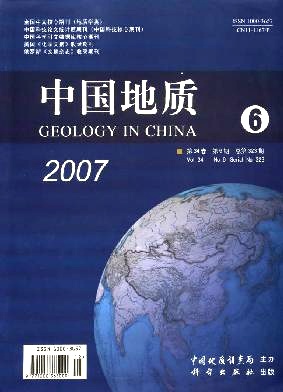LI Dun-peng1,2, ZHAO Yue1, HU Jian-min1, LI Xin-lin2, ZHOU Xiao-kang2, WANG Xiang-li2, DU Shao-xi2, XIAO Ai-fang2. Zircon TIMS U-Pb dating of the Qitaidaban granite in the West Kunlun Mountains and its thermal evolution history[J]. Geology in China, 2007, 34(6): 1013-1021.
| Citation: |
LI Dun-peng1,2, ZHAO Yue1, HU Jian-min1, LI Xin-lin2, ZHOU Xiao-kang2, WANG Xiang-li2, DU Shao-xi2, XIAO Ai-fang2. Zircon TIMS U-Pb dating of the Qitaidaban granite in the West Kunlun Mountains and its thermal evolution history[J]. Geology in China, 2007, 34(6): 1013-1021.
|
Zircon TIMS U-Pb dating of the Qitaidaban granite in the West Kunlun Mountains and its thermal evolution history
-
1. Institute of Geomechanics,Chinese Academy of Geological Sciences,Beijing 100081,China;2. Shanxi Institute of Geological Survey,Xi'an 710016, Shaanxi,China
-
Abstract
Abstract:TIMS U-Pb dating of zircons from the Qitaidaban granite in the West Kunlun Mountains yielded an age of 202.2±3.4 Ma (MSWD=8.65), and the apatite fission-track dating of samples taken at different altitudes yielded ages of 24.8-14.0 Ma. Fission-track thermal history modeling, combined with the previous data of 40Ar-39Ar dating, shows that the Qitaidaban granite underwent three rapid cooling stages (uplift and erosion) and two slow cooling stage (uplift and erosion) at least, i.e.: rapid cooling at 202.2-195.4 Ma, 26-15 Ma and since 5 Ma, and slow cooling at 195.4-26 Ma and 26-15 Ma. The rapid deroofing of the ~3 m thick topmost part of the crust below the West Kunlun Mountains took place at 26-15 Ma and since 5 Ma, which was the result of Eurasia-India collision.
-

-
-
Access History







 DownLoad:
DownLoad: